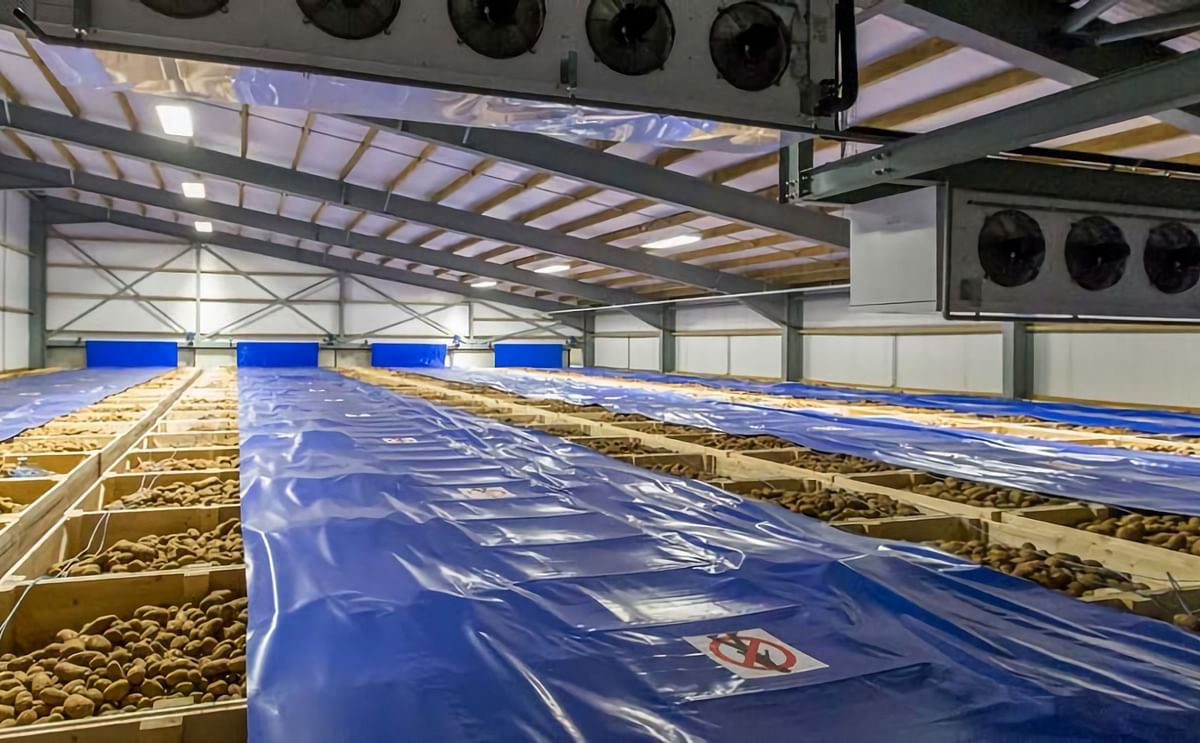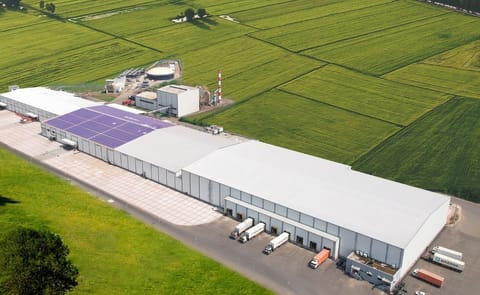The Future of UK Potato Storage Research
The Future of UK Potato Storage Research

AHDB announced last week that they have put some potato storage research projects out for external tenders.
AHDB’s aim remains to deliver independent storage research. While we are looking at how we might best do this, there are several things that will not change.
Rob Clayton, Strategy Director Potatoes at AHDB:
“We will continue to:
We know that storage research has never been more important, and our existing projects that are underway at Sutton Bridge Crop Storage Research (SBCSR) will continue. SBCSR will stay open until we are confident that external providers can meet the needs of the industry.
- Work with you through our board and committees to deliver what the industry needs.
- Fund independent storage research and, where necessary, the facilities needed to deliver it.
- Supply you with the results of, and key points from that independent research.
But we also understand that by putting work out to tender, we have raised a number of questions.
Storage Research: What’s the priority?
There is absolutely no doubt that with changes to sprout suppressants, the demise of CIPC, the introduction of alternatives, and the need to thoroughly clean stores, independent research, and knowledge exchange for storage is absolutely vital right now and for the future.
That’s why we reviewed our budget two years ago to increase the spend on storage and we’ve ring-fenced that commitment for the next five years.
What does the Potato Board think?
When the AHDB Potatoes Board started to review the spend last year, they agreed on a few key points in relation to how we spend, mostly through Sutton Bridge Crop Storage Research, right now:-
In combination, it means that whilst delivering the right independent research and advice is paramount, there might be different and better ways to buy the research and provide the succession plan we need in the future.
- The independent nature of how AHDB funds research is valued right across our program, this is no different for storage issues and needs to be secured for the future.
- Because of the size of SBCSR, and the number of scientists we employ, we’re not eligible to capitalize on the research funding that comes through the biological research councils. In a practical sense it means that when we fund projects through other research institutes, we can make the levy go up to four times as far.
- Geography and distance from big academic hubs make it difficult to attract new scientific talent to potato research at Sutton Bridge. That means our succession planning is always a risky business and we lose out to more established and vibrant research hubs.
- AHDB isn’t built to manage a research facility. As SBCSR is the only research facility owned by AHDB, it’s hard to justify the personnel required to write and manage bids, seek out commercial customers, and other over-head type activities other research institutes pick up with their greater scale of operations.
- The talent, knowledge, and skills of the SBCSR team are paramount and their welfare is important to us.
So what’s happening now?
Last autumn we started our initial discussions with potential research partners who spent a day with us at Sutton Bridge learning about what we do and what our priorities are.
Last week we converted these initial discussions into a formal tender process so we can learn more about how research institutes would go about handling some of our research challenges.
We’ve asked them to tell us how they would deliver key pieces of research on fresh and processing sprout suppression, dormancy in varieties, store cleaning, and CIPC residue management. Essentially, a list that came out of our original sprout suppression discussions with levy payers.
And what happens next?
This is where we are keeping an open mind as so much depends on how research institutes respond. With a fair wind and institutes willing to invest in stores we might find that by harvest 2020 we can have teams from SBCSR and research institutes shadowing each other, learning how trials are done, by harvest 2021 we might see some trials co-located and by harvest 2022 some research institutes will be up and running in their own right.
With continued self-isolation, it might take a whole lot longer. Any good project accounts for risk and we’ll always keep a 'plan B' in our back pockets if we find the research institutes can’t hit the target we’ve put out there.
One thing’s for sure; we all recognize the need for the research and KE for the foreseeable future and we’re not going to lose sight of that. We are working steadily through a procurement plan and making sure the challenges presented post-CIPC get addressed in the way we have planned.”
Ray Andrews, Crop Systems Limited:
“AHDB’s announcement that it is consulting on the future of the Sutton Bridge Crop Research Station, and on potato storage research more broadly, should worry every potato grower in this country.
Too many people in the sector still seem unaware this is happening, so we risk sleep-walking into an uncertain future.
The excellence of Sutton Bridge’s work is recognized right around the world.
Since it was launched in 1964 it has built up an outstanding track record for world quality research. It is a jewel in the crown that should be treasured rather than trashed.
Completing all major research into such a complex subject on one site means it has a unique synergy and level of coordination that cannot be achieved if the work were split between multiple sites, no matter how excellent those individual sites may be.
In addition, this proposal comes when growers are facing a unique triple threat; from coronavirus; from the withdrawal of CIPC and from Brexit.
The last thing it needs is uncertainty hanging over a unique, world-leading research facility that has achieved so much.
I urge everyone involved in the potato industry to make their voice heard and to protect this unique facility.”
Like to receive news like this by email? Join and Subscribe!
Get the latest potato industry news straight to your WhatsApp. Join the PotatoPro WhatsApp Community!
Highlighted Company
Sponsored Content
Sponsored Content
Sponsored Content
Sponsored Content










